
In this lesson, students will hear the final presentations, evaluate the arguments, and vote on the most convincing visions presented.
- Subject:
- English Language Arts
- Material Type:
- Lesson Plan
- Author:
- Pearson
- Date Added:
- 11/02/2020

In this lesson, students will hear the final presentations, evaluate the arguments, and vote on the most convincing visions presented.

In this lesson, students will complete their presentation with their group.
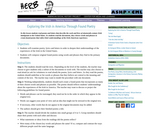
In this lesson students read poems and letters that describe the work and lives of nineteenth-century Irish immigrants to the United States. As students read the documents, they choose words and phrases to create found poems that reflect their understandings of the Irish-American experience.
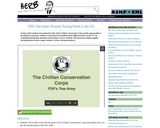
In this activity students learn about the goals of the Civilian Conservation Corps and the opportunities it provided for young men. Students create poster presentations about different aspects of the CCC by combining photographs and quotes from primary sources. Students will need poster-making supplies (including poster board or paper, markers, scissors, and glue/markers).
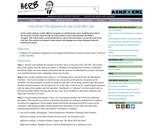
In this activity students consider different viewpoints on whether former slaves should be given land at the end of the Civil War. Students read one of five primary sources and summarize the author's viewpoint. This activity makes a good introduction to a unit on Reconstruction or to sum up a unit on the Civil War. This activity was designed to help students with language processing challenges synthesize historical documents.

This lesson has students work in cooperative groups to understand and analyze Shakespearean sonnets. The final product is a scrapbook containing analyses of the sonnets by the different group members.
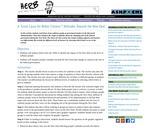
In this activity students read letters from ordinary people to government leaders in the Roosevelt Administration. Then they interpret the range of attitudes about the changing role of the federal government during the New Deal. The letters for this activity all contain reading supports and teachers can differentiate this activity for different levels of learners by choosing which letters to use in the activity.

In this activity, students read two primary documents from the early 1800s: a journal entry from the Lewis and Clark expedition and a Lakota Indian "winter count" calendar. Using an analysis worksheet, students identify key ideas and details from the documents, while also examining the craft and structure of each document. They draw upon both the content and form of the documents to make inferences about the respective cultures of Euro-Americans and Native Americans in the early 1800s.
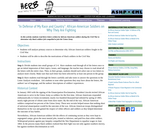
In this activity students read three letters written by African-American soldiers during the Civil War to determine why black soldiers felt compelled to join the Union Army.
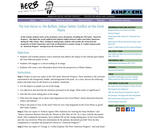
In this activity, students read a series of primary source documents, including the 1872 print "American Progress," that depict the social, political and cultural conflicts between settlers and Native Americans during the 19th century. Then, working in small groups, students will consider the events from the perspective of Native Americans, and create an illustration to counter George A. Crofutt's famous print of "American Progress" moving across the Great Plains.
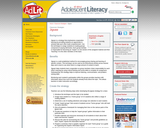
Jigsaw is a strategy that emphasizes cooperative learning by providing students an opportunity to actively help each other build comprehension. Use this technique to assign students to reading groups composed of varying skill levels. Each group member is responsible for becoming an "expert" on one section of the assigned material and then "teaching" it to the other members of the team.
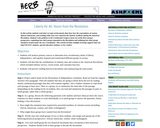
In this activity students read short excerpts of documents that show how the expectations of women, African Americans, and working white men were raised by the rhetoric of liberty during the American Revolution. Students write petitions to the Continental Congress from one of the three group's perspectives, explaining how their group responded to the Revolution and outlining how their group should be treated under the new Constitution. This activity includes multiple learning supports that can help ESL/ELL students, special education students, or low readers.

In this activity, students use facts and make inferences to create narratives about the journey of the slave ship Brookes. Students work in groups to create narratives from one of three different perspectives: Captain, Sailor, or Captive.
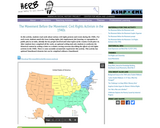
In this activity, students read cards about various civil rights protests and events during the 1940s. For each event, students match the issue (voting rights, fair employment, fair housing, or segregation in public places) at stake, identify the key people involved and what region of the country it took place in. After students have completed all the cards, an optional writing task asks students to synthesize the historical content by writing a letter to a relative serving overseas describing the efforts of civil rights activists in the 1940s. There is some assembly of materials required for this activity. This activity has optional Smartboard elements but can be completed without a Smartboard.
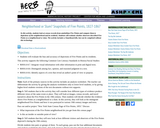
In this activity, students look at census records from antebellum Five Points and compare them to depictions of the neighborhood and its residents. Students will evaluate whether observers described Five Points as a neighborhood or slum. The activity includes a Smartboard file, but can be completed without this technology.
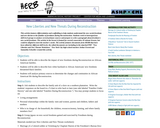
This activity features differentiation and scaffolding to help students understand the new social freedoms and new threats to the families of freedmen during Reconstruction. Students work in heterogeneous skill-level groups to analyze several primary sources and prepare to write a paragraph about freedmen's new social freedoms. The activity in the lesson is framed for several consecutive 45-minute lessons, but could be adapted to meet the teacher's needs. The activity features documents from HERB that have been edited for different skill levels; the edited documents are including in the attached PDF "New Liberties and New Threats Worksheet." New York City high school teachers Arthur Everett and Samantha Schoeller created this activity.

In this activity students research roles as either Irish immigrants or African-American residents in the midst of the New York City Draft Riots that took place in July 1863. Students gather evidence from primary sources to develop their characters, based on actual census records, and then enact a role play debating whether to stay in the city or flee (if they are African American) and whether to participate in the riots or protect their black neighbors (if they are Irish immigrants).

In this activity students write original corridos(a type of Mexican folk song) based on the oral histories of braceros. Before writing their own corridos, students learn about the formulas and themes of corridosand analyze a World War II-era corrido. This lesson works best if students have basic background information on the bracero program.
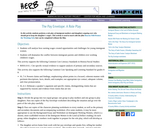
In this activity students perform a role play of immigrant mothers and daughters arguing over who should get to keep the daughter's wages. This activity is used to teach with the film Heaven Will Protect the Working Girl, but can be completed without the film.

In this activity students read poems written by Chinese immigrants to understand the hopes of and challenges faced by Chinese immigrants during the late nineteenth and early twentieth century. Then students write an original poem about the Chinese immigrant experience in the U.S. This activity uses materials in both English and Spanish and includes a word bank to help ESL/ELL students create their poems.